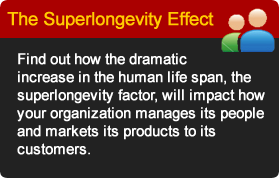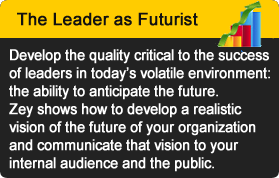The Expansionary Times
The Examiner
3D Babies Provides Parents 3D-Printed Model of As-Yet-Unborn Baby
3D Babies Provides Parents 3D-Printed Model of As-Yet-Unborn Baby
3D Babies Could Set Off New Phenomenon
3d-babies.com
February 5, 20142:29 PM MST
For the last several years couples have been able to view their as-yet-unborn child via sonograms and other imaging techniques. Now, thanks to 3D printing advancements, expectant couples will be able to not only view an image of the unborn child, but can actually possess a lifelike model of the 24-32 -week old fetus.
The husband-and-wife entrepreneurs Gerard and Katie Bessette established the start-up company 3D Babies to provide expectant couples the technological means to possess and hold a physical representation of their baby before he or she is even born.
Their company uses 3D printing technology to produce three-dimensional replicas of gestating fetuses. Parents only have to submit to the company a few 3D and 4D ultrasound scans of their 24-week or older fetus. The company creates or "prints" a computerized digital model of the fetus, accurately capturing even the facial features as-yet-unborn baby.
The parents-in-waiting pay between $200 to $800 based on the size of the lifelike replica. A 2- inch model costs $200, a 4-inch sculpture goes for $400, and a full 8-inch figurine costs $800.
Customers can choose the figurine's skin tone, such as dark, medium, or light, and can also select the position of the model, in a fetal position or with arms or legs raised.
3D Babies could set off a new cultural phenomenon in which parents 3D print the entire human life cycle, cradle to, well, who knows when. It is certainly not implausible to imagine that parents will want to document the growth of their children during their "wonder years" with 3D full- body or head-shot physical models of their children as they develop and mature. This could provide parents the hitherto technologically impossible ability to realistically chronicle the physical changes and development of their offspring down to the most minute detail. 3D printing technology is extraordinarily accurate.
Only time will tell whether the public desires such realistic representations of their children, whether before and after birth, and ultimately themselves.
RAND:Only 858,000 Bought Insurance Under Obamacare--Support For Law Drops!
RAND:Only 858,000 Bought Insurance Under Obamacare--Support For Law Drops!
April 6, 201411:46 AM MST
According to a newly released RAND Corporation study, barely 858,000 previously uninsured Americans have paid for new policies and received health insurance under the new Obamacare health insurance program.
Critics have pointed out that this number stands in sharp contrast to the Administration's claim that 7.1 million people are newly enrolled in the program.
High premiums, expensive deductibles, and a limited selection of doctors and hospitals have helped erode public support for Obamacare. A recent AP/GfK poll revealed that support for the Affordable Care Act has declined by 13 percentage points since 2010. Only 26% of Americans now favor the ACA, compared with 39% then. A WSJ/NBC poll found that only 29% of independents support the law.
Other polls reveal that the public could very well express its dissatisfaction with the new health- care law at the voting booth in 2014 and beyond. The GOP is slightly ahead of the Democrats for the first time in months in the Associated Press generic Congressional ballot poll. And registered voters favored the Republicans by 14 percentage points over Democrats--51 percent to 37 percent. In January, they were split, with 45 percent preferring the Republicans and 42 percent preferring Democrats.
A strong GOP win in 2014 would be interpreted as a mandate from the American people to either repeal the ACA or change it significantly. Many think fundamental changes to the law could include making the law totally voluntary and eliminating penalties for non-compliance.
Ironically, the media's obsession with the debate over the Affordable Care Act and the political fallout from the law's implementation has tended to distract the public from what many consider the more important health news: Medical scientists and biotech researchers continue to make significant progress in their efforts to dramatically extend the human life span and improve people's overall health.
As I point out in the upcoming new edition of my book Ageless Nation, a host of medical and scientific advancements--nanotechnology, the bioprinting of body parts and organs, stem cell science, genetically re-engineering of the fetus, human enhancement technologies, dechronification, and gene therapy--are setting the stage for a dramatic increase in human life expectancy in the very near future.
Instead of spending our time and energy trying to micro-engineer a labyrinthine government medical insurance system, we should be concentrating our efforts and resources on re- engineering and perfecting the human body.
America's next leaders should adopt as a national mission the achievement of true superlongevity by the end of the 21st century. Hopefully other nations will follow suit. By dedicating our national and global resources to this effort, we can realistically anticipate a future in which humans will live on average 125 years or greater as vibrant, healthy, and physically and mentally dynamic human beings.
Fed Won't Taper If They Read TrimTabs' 2013 Report: Only 114K New Jobs Monthly?
Fed Won't Taper If They Read TrimTabs' 2013 Report: Only 114K New Jobs Monthly?
December 15, 20133:19 PM MST
Many analysts expect the Federal Reserve Board to announce at its Dec. 17-18 monetary policy meeting a decision to "taper," the code word for slowing the pace of its $85 billion monthly bond purchases. The Fed would make such a decision based on its belief that the employment situation in the US is improving.
The Fed's supposed rosy notion about the job market comes largely from reports compiled by the Bureau of Labor Statistics. According to the BLS, in November the US created 204,000 new jobs and theunemployment rate dropped to 7%.
However, before the Fed initiates any new monetary policy based on the BLS November jobs numbers, it might want to consider the recent jobs report published by California-based TrimTabs Investment Research.
TrimTabs, considered by many economists the most accurate source of new jobs numbers, claims that only 115,000 positions were created in the US in November. In fact, Trimtabs CEO David Santschi said, the US has been creating an anemic 114,000 per month for all of 2013, far fewer than the 150,000 jobs per month number in 2012. TrimTabs counted only 91,000 jobs created in October.
TrimTabs bases its employment estimates on the company's analysis of daily income tax deposits of all salaried U.S. employees to the U.S. Treasury. The BLS unemployment rate reflects a calculation that excludes those in the labor force that are underemployed or have become so discouraged they quit looking for work.
According to University of Maryland economist Peter Morici, when we add in discouraged adults and part-timers who want full-time employment, the unemployment rate is 13.8 percent, not the BLS estimate of 7.0%.
TrimTabs CEO Santschi says his company's employment numbers clearly demonstrate that “The American jobs machine is stuck in low gear despite billions of dollars per day in fiscal and monetary stimulus.” According to Sanstchi, “Employment growth has been below 200,000 jobs in every month this year.”
Clearly, the US economy is still in a quagmire. We are becoming a "part-time nation," as a generally recessionary economy and Obamacare mandates discourage employers from creating full-time jobs. According to the survey of households, between September and November a paltry 83,000 people became employed, but the number of people not in the labor force during that period rose by an eye-popping 664,000.
Most disheartening is the growth in the number of Americans without jobs. As of November 2013 102 million working age Americans are either classified as officially unemployed or not in the labor force at all.
Certainly, there are reasons for the Federal Reserve to slow down and even eliminate its capricious money-printing operation, which many refer to as QE-Infinity because of the open- ended nature of the Fed's bond-buying. This version of QE is helping promote dangerous asset bubbles in the financial and real estate markets. In addition, the US will eventually have to pay the inflationary piper when all of that newly-printed money finds its way into the economy's blood stream.
But the Fed should not base the decision to taper on the questionable assumption that the US employment market is returning to health. Data from TrimTabs and other research sources paint a stark picture of a struggling economy plagued by persistently high unemployment.
Clearly, economists, government planners and media talking heads must start leveling with the American people, and with themselves for that matter, about the true state of the US economy. Only then will we be ready to take the bold steps necessary to get the country back on the road to economic growth and prosperity.
Muse Headband Opens Way to Enhanced Human-Computer Interface
Muse Headband Opens Way to Enhanced Human-Computer Interface
June 5, 201412:01 PM MST
Muse Promises to Enhance Concentration, Mental Capabilities http://singularityhub.com/2014/06/04/headband-opens-the-door-to-brain-to-computer- applications/
Canadian company InteraXon is taking the brain-to-computer applications field to a whole new level. They have created a headband called Muse which will actually enable the user to track his or her brain activity for an hour a day to help the user improve his or her power
Muse is simply a headband fitted with EEG sensors.
According to co-founder co-founder Trevor Coleman“The same way taking your pulse will tell you how your body is doing during physical exercise, this will tell you how your brain is doing during mental exercise. ” Coleman claims that this new device will empower the wearer to concentrate and maintain focus on a single thing. The machine can detect when the user's mind wanders--the wearer will receive feedback, informing him or her that the mind is wandering and it is time to refocus.
Over the last decade critics have complained that technological breakthroughs such as smartphones and iPods are interfering with people's ability to concentrate. Smartphones have made Facebook and social networking so ubiquitous that users often have difficulty staying focused during conversations, lectures, classes, movies, and other daily activities.
Evidently, while technology taketh away, it can also giveth. Muse offers the possibility of a technology that will act as an "electronic guardian" over the user's tendency to be distracted. As most artists, scientists, writers, and inventors will attest, they only become truly creative once they are in what many refer to as the "zone," what others call "the flow." At those times of peak concentration, the brain seems to operate at an indescribably intense level of mental activity in which the mind seems to transcend its functional limitations.
This mental "zone" is the creative seedbed from which emerge breakthrough inventions, artistic creations and original ideas, concepts, and insights.
We can only hope technologies such as Muse, which operate according to sound biofeedback principles, can help people achieve higher mental concentration and therefore become more productive. Such breakthroughs can only open the pathway to a better tomorrow for everyone.
DR. ZEY'S PRESENTATION TOPICS


